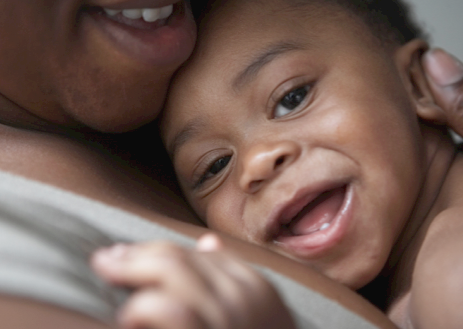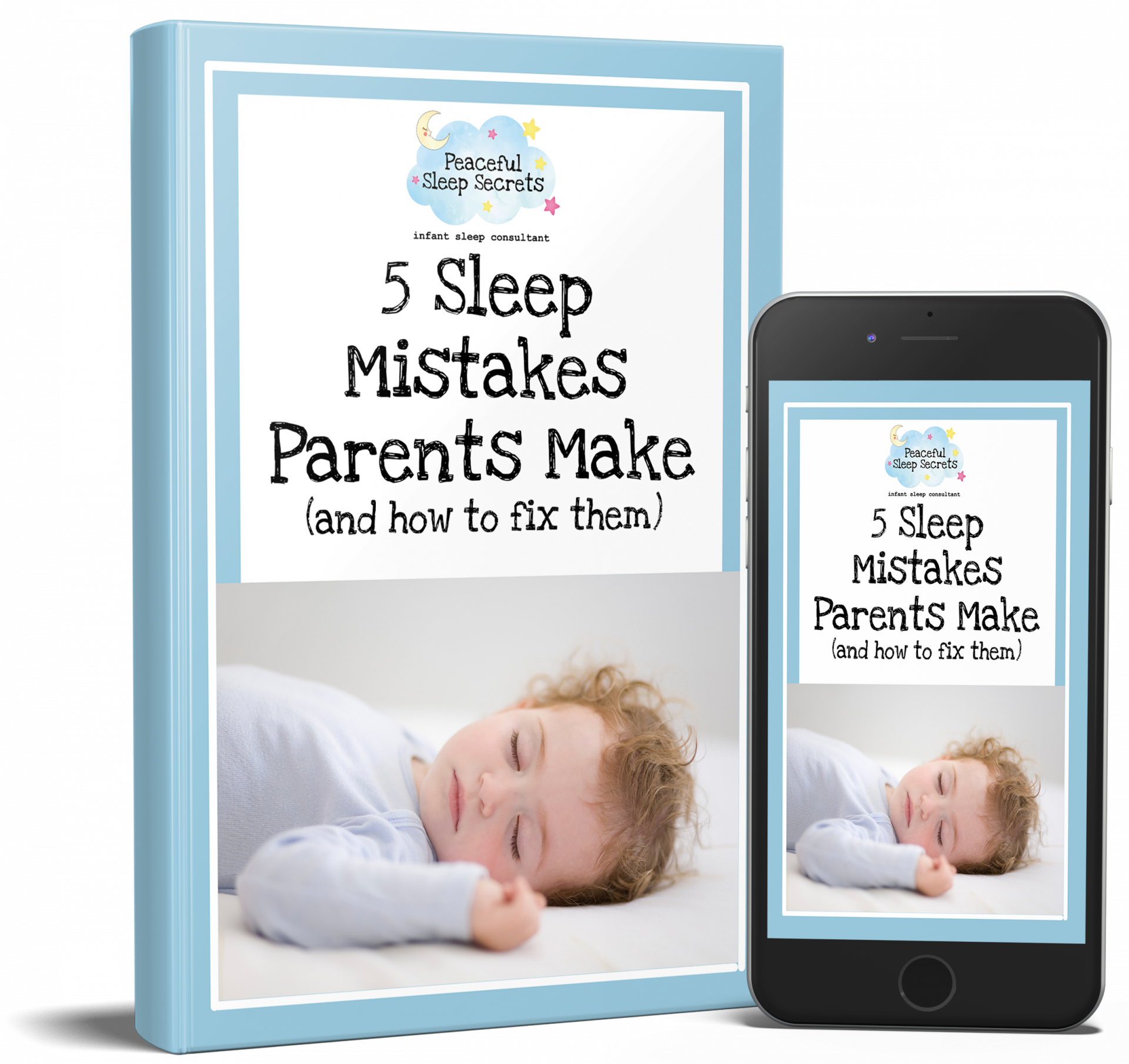Secure Attachment and Sleep Training

I’ll be completely honest with you… one of the reservations I had when I first contacted a sleep consultant for help with own children was, that whatever ‘sleep training’ I did, would negatively effect the close bond I had formed with my babies.
As an infant school teacher I have had extensive training in Attachment Theory and I feared that even leaving my baby to grizzle for a few minutes could lead to them being psychologically damaged in the future. With my first born I was terrified of even letting her fuss for a few minutes and would pick her up the minute she made even a slight whimper.
It wasn’t until I researched Attachment Theory further, specifically in relation to sleep, that I realised there is a lot of misinformation out there. You will always find people who are advocates of sleep training and want to do it as young as possible and on the other side you will always find people who are dead against sleep training, claiming that it will damage your child.
Personally, I think it’s really unfair to make sleep-deprived and emotional mums feel bad or selfish for wanting sleep. Sleep is one of life’s necessities. It’s absolutely vital for both our physical and mental well-being. I know for a fact that if I hadn’t got help with my little one’s sleep when I did then I would’ve ended up down a very dark hole indeed. I needed more sleep to be the best parent I could be to my little ones. Without sleep I wasn’t able to function. I was tearful, irritable, irrational and I certainly wasn’t able to enjoy the precious moments with my children.
So what is the truth?
Let me tell you…
There’s often some confusion between ‘Attachment Parenting’ and ‘Attachment Theory’. Both of which are different things and are only related to each other because they share the word ‘attachment’ in their titles.
Attachment Parenting refers to a specific parenting approach which favours baby-wearing, co-sleeping, breastfeeding on demand and immediately tending to a baby if they are fussing.
Attachment Theory focusses on the emotional bond between two people, in this case, between caregivers and their child. Attachment Theory suggests that primary caregivers who are available and responsive to their child’s needs allow the child to develop a sense of security. The child knows that the caregiver is predictable and dependable, which creates a sense of security. It allows the child to form a secure base from which they are able to explore the world.
Little ones who have formed a secure attachment to their primary caregiver feel safe expressing a variety of emotions including distress and discomfort. They will happily explore unfamiliar places and situations confidently as long as their caregiver is nearby. Securely attached children may become distressed when their caregiver leaves but they will also respond positively when their caregiver returns.
Little ones who do not have a secure attachment tend to avoid their caregiver when they are distressed or try to surpress their feelings and emotions. This can also happen if negative feelings are dealt with in a negative way such as, shouting, ignoring or becoming annoyed with the child when they are upset or angry. Children can quickly form an association that being distressed leads to a negative reaction from the caregiver and so will try to hide their true feelings. You might have wondered why your child will often show bigger emotions or react to situations in a different way in front of you, their parents, than they would if they were in public or with a distant relative or friend. If they do this it’s actually a good sign. It means they are more comfortable with you and feel that they can freely express their emotions without any lasting negative consequences; they know they are loved and the secure attachment will not be broken.
Studies have shown that children who do have a secure attachment are actually more independent later in life, have higher self-esteem, better relationships with their parents and family members, have greater coping skills, social skills, and leadership qualities than children who have not formed a secure attachment.
Insecure attachments aren’t just created by a parent responding negatively though. Research has also shown that it can be due to a failure to respond appropriately. This can also happen if an adult is consistently responding too quickly and actually not giving a child time to learn skills independently. Stress, for example, is something we have to deal with in life and it’s important that our children learn to deal with negative emotions as well as positive ones. From this perspective, it could be argued that always responding immediately the minute a baby starts to moan could actually be detrimental to their development.
If parents decide to follow the attachment parenting style then that’s absolutely fine, but like any parenting style, it has disadvantages if it is stuck to very rigidly, especially if a baby’s individual personality and needs are not taken into account.
So what’s this got to do with sleep training?
In my experience as a sleep consultant, many parents agree that cry-it-out is an approach to sleep training that they are not comfortable trying and it’s certainly not a method I would suggest to any of my clients. Knowing what we know about attachment, and the need to respond to your child, it’s clear that this approach could be potentially damaging if baby is left to cry alone regularly for prolonged periods of time.
Inevitably, making any changes to your child’s sleep, will likely cause a little upset. But by using gentle methods to gradually change and tweak your little one’s sleeping habits we can minimise any crying and will always be on hand to offer support and reassurance throughout. Parents are able to stay close to their baby, if they wish, offering them comfort, reassuring them of their presence and responding to their needs while they gradually learn to fall asleep independently. I would certainly never suggest anything that would potentially damage the bond between you and your precious little one.
With my own children, I found that my inbuilt biological impulse to prevent my baby from crying meant I used any method possible to just stop the noise. However, while feeding, rocking or offering a dummy may have had the desired effect in the short-term, the root of the problem was not addressed; my baby was crying was because she was overtired and didn’t know how to get to sleep without my assistance. Unknowingly, I was actually holding my baby back and by not allowing her to have some space, I was inhibiting her ability to learn to fall asleep.
Magda Gerber, who is a child expert and founder of Resources for Infant Educators said, “An anxious and irritated parent will most likely do what brings the fastest relief – give the breast or bottle. The baby almost always accepts it, calms down and often falls asleep. Of course, this is the right solution if the baby is hungry. However, if the baby has other needs (for instance being tired or having pain), she will learn to expect food in response to these other needs, and grasp the breast or bottle even though she is not hungry.”
I completely understand how difficult it can be to allow your baby to cry, even for short periods of time, and even if you’re right next to them offering comfort and support. When our babies cry, our natural instinct as parents is to prevent it as quickly and effectively as possible. But babies cry to communicate and your baby too may actually be communicating that s/he wants to go to sleep and just doesn’t know how to go about it. Believe it or not, the vast majority of babies don’t just fall asleep when they’re tired. Falling asleep independently is a learned skill that will help our children sleep better long-term.
When working with me, if and when your baby cries, I absolutely would encourage you to respond. I would always encourage you to check their needs are met; they’re fed, clean, warm and not in any discomfort. Then we can feel confident that if baby is upset it is because they are faced with a new situation and are frustrated because they cannot fall asleep independently – a life-long skill which you are about to teach them!
Your child’s secure attachment to you is reliant upon many factors, the most important being consistent, predictable, reliable parenting, loving reassurance and the knowledge that you will always be there for them no matter what. Secure attachment does not solely rely on being with your child at all times, or immediately rushing to them any time they have a little grizzle.
In teaching your child to settle to sleep peacefully using loving, comforting and predictable responses, you are not only teaching them a skill for life but are also actually nourishing and cementing the strong bond between you. Speaking from personal experience I know that the bond between myself and my two children couldn’t be any stronger… and we are all able to feel well-rested, energised and happy together.
If you’d like more factual information about helping babies cope with stress and learn to sleep then read this great article.
If you'd like my help to solve your child’s sleep struggles then click here and we'll get started. In less than two weeks your whole family could be experiencing their dream sleep!

The strategies in my FREE eBook are FANTASTIC for getting your whole family a great night's sleep. Download NOW and watch your child’s sleep improve instantly!
